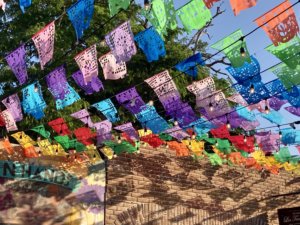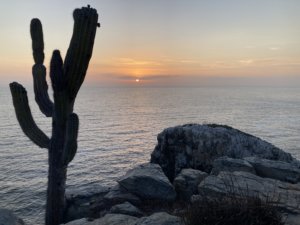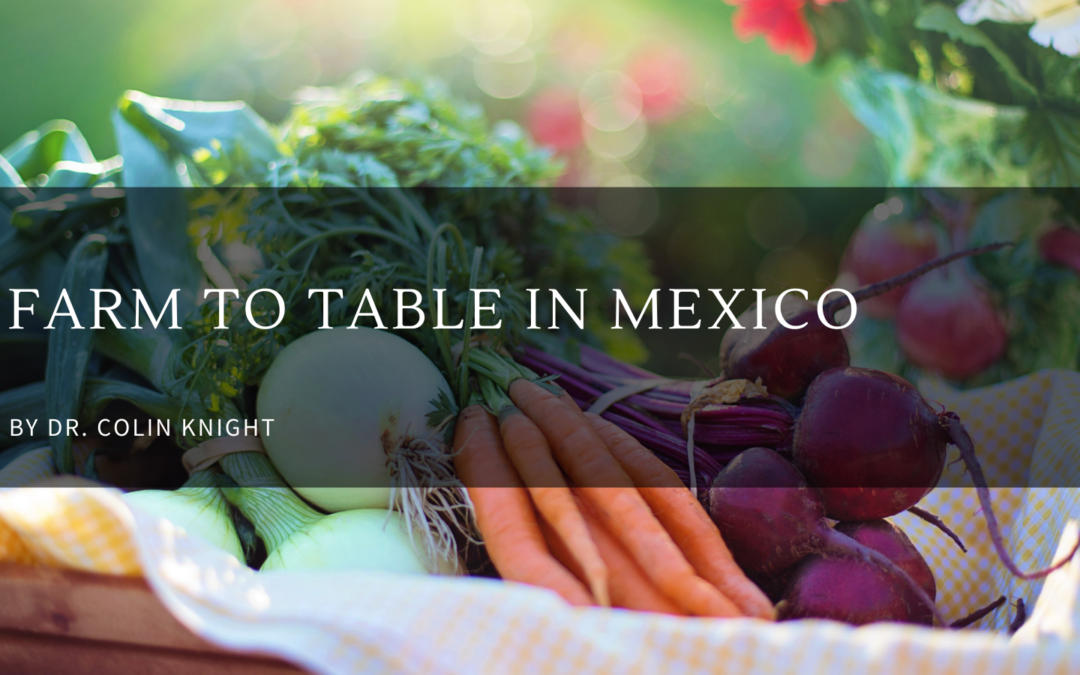I’ve just returned from a trip to Los Cabos. Los Cabos is Spanish for “The Capes” and describes the region at the southern tip of the Baja California peninsula. The best know city is Cabo San Lucas, but the historic and cultural heart of the region pulses 25 miles east in San Jose del Cabo. San Jose has year-round fresh water which, in a region where rain is rare, is why the Spanish made their first settlement in the region there. It is also why there is now a thriving farm-to-table restaurant scene. I tried three of the farm-to-table restaurants during my visit to the region.

The first was Tamarindos. To reach the farm, we drove east of the town, across the dry riverbed, and up into the farm. The restaurant is in a hacienda-like building on a hill looking south across the fields of the farm and west across the riverbed towards the setting sun. Gila woodpeckers darted from palm tree to palm tree while cactus wrens flew in and out of the cactus on the hillside. Of the three, this place felt the most Mexican. All three restaurants seem constructed for tourists and non-Mexican residents of the region. My dinner companion was Mexican, and she noticed that she was the only Mexican guest in any of the three. The cuisine at Tamarindo is simple but tasty. They offered a variety of Margaritas to start. We then had the crudité platter with farm vegetables. Next, I chose the catch of the day – monk fish with mild farm chiles. Having noted the trees bursting with mangos on the farm, the mango pie seemed a natural finish to the meal. The open-air restaurant has a small gallery of art from Oaxaca and outside of it was a display of farm produce including passion fruit, eggplant, and chilis.
The next day we went for a late lunch at ACRE. This restaurant is also east of the city, but this time we went on paved roads across the riverbed and through what will be a high-end housing development. A left turn on a dirt road and up and down some hills to Acre. Acre is on the property of a boutique hotel with tree-house rooms and villas, real estate development, a farm, and, of all things, a dog rescue. Unlike Tamarindo, this establishment was very polished – it felt as if a Miami club and been airdropped into the dessert. There was a nod to the local cuisine on the menu with a tiradito of fresh fish (a local told me that the locals love raw seafood) which was outstanding and a baja fish taco (fried fish in a corn tortilla). For dessert we shared a delicate chocolate tart. After lunch we walked through the most luxurious mango orchard I have ever seen to visit the dog rescue.

For my last dinner in Los Cabos, I had selected the oldest of the farm to table restaurants, Flora’s Field Kitchen. In the same neighborhood as ACRE, the restaurant, like the other two, takes advantage of the dessert climate and is open-air. The establishment has no sign of Mexican culture on the menu. A band of gringos played varied covers of bands ranging from the Eagles, to the Kingston Trio, to the Dave Matthews Band. The space is gorgeous. Well-lit and sculpted fields around the dining area. The menu features not-only farm produce, but also has charcuterie and pork and chickens from the farm. We started with a burrata made on site served with bread baked on site with tomatoes grown on site. The highlight of the meal was the crispy eggplant. Thinly sliced and fried and served with sumac and honey, it was simple and delicious. I would fly back for that dish! I followed with fresh herb pasta served with a ragu of farm-raised pork. For dessert we had a cake with honey ice cream. If you can excuse the total lack of Mexican culture in the establishment, Flora provides an amazing meal that epitomizes locavore in a gorgeous setting.

